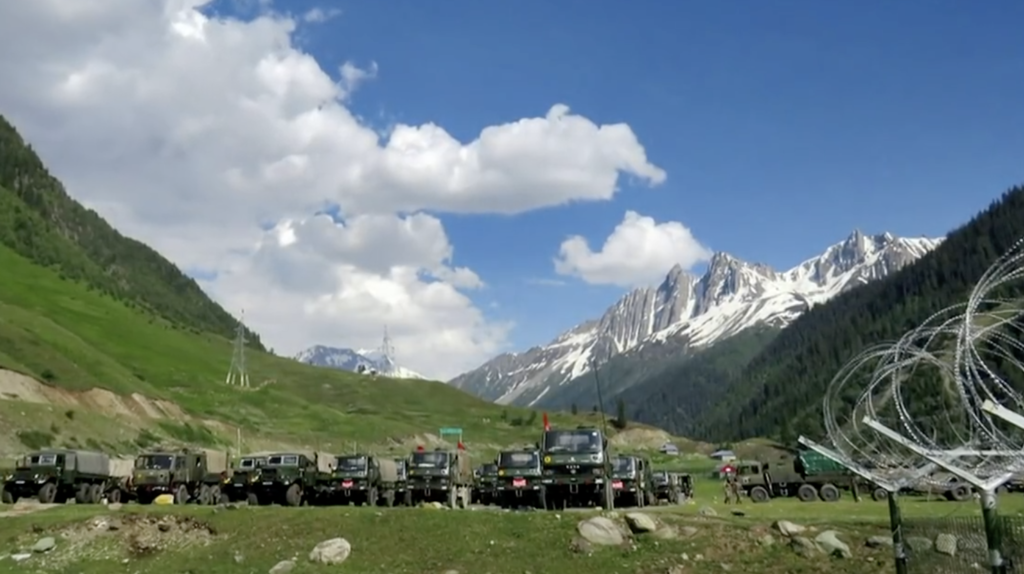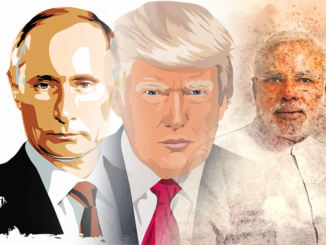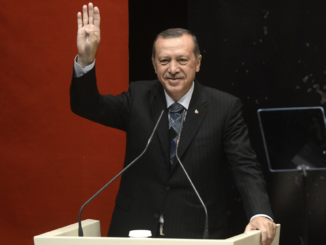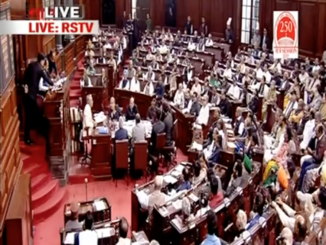
The military confrontation between China and India since early May this year in the Indian occupied territory of Ladakh along the Line of Actual Control (LAC) has been the most serious clash between the two countries since their border war in 1962. At least twenty Indian soldiers have been killed and both countries have significantly increased their military presence in the area. India accused the Chinese of occupying nearly thirty square miles of ‘Indian territory’, while China has blamed the Indians for intruding into areas claimed by China across the LAC.
Over the past week talks to defuse tensions have taken place after Indian Prime Minister Modi stated that no Indian territory had been occupied and that there has been no infiltration across its ‘borders’ by China. Since this is exactly what India had accused China of doing, this claim by the Indian leader appears to be a major climbdown by the Modi government. It has led to severe criticism of the government and the army, even by the usually jingoist Indian commentators. This demonstrates that due to stiff Chinese resistance, India has been forced to back down and is making vain attempts to cover up for the loss of face. It remains to be seen whether the de-escalation between the two sides will endure and further confrontation will be avoided. In any event, this episode in Ladakh has several lessons, not only for China and India but also for the region and the world.
Origins of The Dispute. The Sino-Indian border dispute is a legacy of British colonialism. During British rule in India, the border with China was neither delineated on an agreed map nor demarcated on the ground between British India and China. According to Neville Maxwell, an authority on the issue and author of the book ‘India’s China War’ on the 1962 conflict between the two countries, Britain, at different times from 1899 to 1947, put forward eleven different maps to delineate the border with China. The Macartney-Mac Donald line of 1899 drew the border on the Indus watershed, ceding Aksai Chin to China but later the Johnson line included the area within British India as part of Ladakh even though actual possession remained with China.
Accordingly, after Indian independence, the Indians claimed nearly 13000 square miles of territory in the Aksai Chin area and Ladakh. Apart from this dispute in the North West of India, New Delhi claimed about 35000 square miles in it’s North East which is India’s Arunachal Pradesh on the basis of the British delineated MacMohan line drawn up arbitrarily in 1914. The Chinese, have of course, always rejected these colonial boundaries and clearly stated their position after the success of the communist revolution and the creation of the People’s Republic of China in 1949.
At first, due to friendly relations between India and China based on ‘peaceful coexistence’, the border dispute was set aside. In fact, Premier Zhou Enlai offered a compromise, proposing Chinese concessions in the East for Indian concessions in the West. Indian Prime Minister Nehru rejected this offer and claimed the whole of Aksai Chin. By the mid-1950s, Nehru launched his ‘forward’ policy on the border. He supported the CIA’s effort to stoke the Kampa rebellion in Tibet against China, then gave sanctuary to the Tibetian Dalai Lama and his government in exile. Nehru then ordered military operations in Chinese claimed areas which eventually led to the1962 China-India war in which India was badly defeated. Subsequently, the two sides agreed to accept a cease fire line. While limited fighting again broke out in 1967 in the Nathu La area after India occupied Sikkim, both countries agreed in 1993 not to arbitrarily change the status quo and converted the ceasefire line into the existing LAC.
Reasons for the Current Crisis. In 2017, when China was in the process of conducting negotiations with Bhutan to settle their boundary, India intervened and deployed its troops on the tri-junction of this border while opposing the construction of a Chinese road on its side of the China- Bhutan border. The Indian argument was that the Chinese road was too close in proximity to the ‘Chicken’s Neck’ that connected India to its North Eastern States. This ‘Doklam stand-off’ led to the Wuhan Summit between Indian and Chinese leaders in 2018 in which they again agreed to settle their boundary dispute through negotiations and reaffirmed their commitment not to change the situation on the ground. At this Summit the Chinese also asserted that a durable solution in the North West sector involving Ladakh should also include Pakistan – a proposition that the Indians rejected, even though Pakistan remains a concerned party to the Jammu and Kashmir dispute.
Despite this undertaking with the Chinese, Modi launched his ’forward’ policy in August 2019, by revoking the nominal ‘autonomous status’ of Indian Occupied Kashmir (IOK), in violation not only of the relevant UN Security Council resolutions and the Simla agreement with Pakistan but also the 1993 and 2018 understandings with China. He also converted Jammu and Kashmir and Ladakh into separate Union Territories and issued maps showing Chinese Aksai Chin to be a part of Indian Ladakh and AJK and GB to be a part of India. These actions were severely condemned and rejected by both Pakistan and China. But India did not take them seriously.
Thereafter, Indian troops began incursions into disputed areas of Ladakh, especially the Galwan Valley, together with building up the military infrastructure, such as the road from Leh, Capital of Ladakh to Daulat Beg Oldi, close to the Chinese positions in Aksai Chin. The Indian troop presence was also increased along the LAC. The Chinese made counter moves, which according to the Indians, have led to the Chinese takeover of areas in the Galwan valley, Hotsprings, Pangong Tso lake and Depsang Plains across the LAC. Though no firing has yet taken place, the hand to hand fighting has led to over twenty Indian casualties on 15 June. But last week, Prime Minister claimed that no Indian territory was under the Chinese control nor were the Chinese troops on Indian soil. This clearly contradicts the earlier claims of the Indian side.
Lessons from Ladakh. Several lessons emerge from the recent developments in Ladakh. First, in the context of Sino-Indian relations, it is clear that Modi’s action of August 2019, to arbitrarily change the status of Ladakh has crossed a Chinese red line. China has, therefore, used force to assert its claim in the area and reject the Indian moves. By strengthening its defensive positions, China has signalled to India that it will no longer tolerate any Indian incursions into areas claimed by China, irrespective of the rising tensions between the two countries. In short, China has sent the message that it is ready for war with India. Judging from Modi’s statement, the Indians have, for now, obviously backed down.
The flare-up with China along the LAC places India in a difficult military position as it now finds itself in a military confrontation with both China and Pakistan (along the LOC), which are both nuclear powers as well. Now even Nepal has started to assert its claim over the Kalapani area occupied by India since 1962. This arc of confrontation stretches from Jammu along the LOC with Pakistan up to the Siachen glacier and onwards along the LAC with China up to the Karakoram Pass.
Notwithstanding Indian plans to simultaneously fight a two and a half wars (with China, Pakistan and the Kashmiri people), the reality is that India is hardly in a position to fight Pakistan, as the Pulwana crisis of February 2019 demonstrated, let alone fighting Pakistan, China and the Kashmir uprising at the same time. Consequently, such Indian illusions for regional domination have already been shattered. But the danger remains that Modi’s fascist government, which has raised a war hysteria among its people, would be under intense pressure to save face, following the current reversal with China. In these circumstances, it may opt to launch another ‘surgical strike’ against Pakistan, most likely after engineering a false flag operation as justification. This is a danger that Pakistan has already warned could happen and should be fully prepared to repulse. India can also step up acts of terrorism in Pakistan and its repression in IOK, both of which it has already done. But no Indian action can now change the fact that the Kashmir dispute henceforth has four parties- the Kashmiris, Pakistan, India and China. These are the regional outcomes of the developments in Ladakh.
The repercussions at the global level are no less daunting for India. It has been the Indo-US strategic partnership and India’s participation in the quadrilateral alliance with the US, Australia and Japan against China, that has in fact encouraged the Indian belligerence against China and Pakistan as well as other neighbours. But, while the US seeks Indian partnership to encircle and contain China, it is not ready to get involved in a Sino-India war. Not surprisingly, President Trump has offered to mediate between the two countries and has not come out openly to support India as did President Kennedy during the 1962 war. Nevertheless, the Ladakh confrontation will push India into an even closer embrace of the US, adding to their joint opposition of the Chinese BRI and CPEC with Indian support of American interference in Hong Kong, Tibet and Xinjiang. On the other hand, China will now give up its efforts to try and moderate Indian behaviour such as during the Wuhan Summit and would come out more openly to oppose India across the board. This would, in turn, serve to further deepen Pakistan-China cooperation.
Similarly, Russia, which has had a history of close relations with India, will need to balance its relations between India and China. Owing to their increasing confrontation with the US, the Russians and the Chinese have evolved a close strategic partnership which is far more important for Moscow than its relations with New Delhi. As a result, Russia has also refrained from unequivocally supporting India against China. At most, it has called upon both sides to demonstrate restraint.
Conclusion. These developments are a clear blow to Indian ambitions for regional hegemony and great power status. While India has been able to get away with intimidating its smaller neighbours, it is not in a position to overwhelm one, let alone two, nuclear weapon states like China and Pakistan. India’s alliance with the US has enhanced its military capabilities but not to the extent that it can browbeat either China or Pakistan. The ongoing confrontation with both its neighbours has therefore made India more vulnerable. This could, however, propel India towards greater reliance on sub-conventional warfare tactics, such as promoting terrorism in Pakistan and joining the US to incite dissent within China.
So, while India has been talking up a big strategic game at the global level to compete with China, it is unable to walk this talk. As Modi’s climb down signifies, India has decided that at least for now and for the foreseeable future, discretion is the better part of valour in its clash with China.
![]()




Be the first to comment